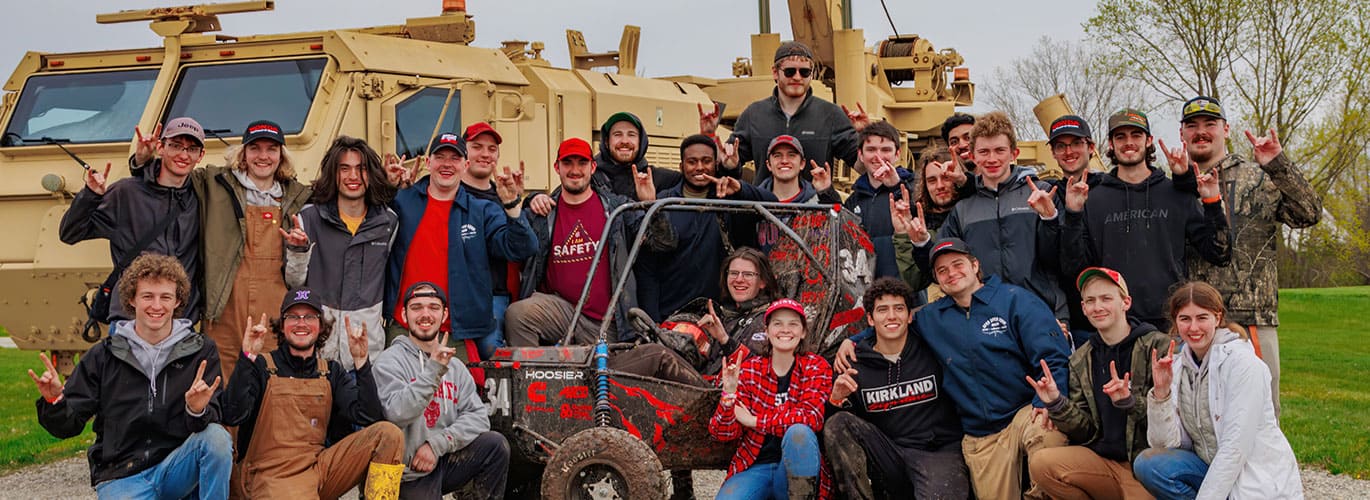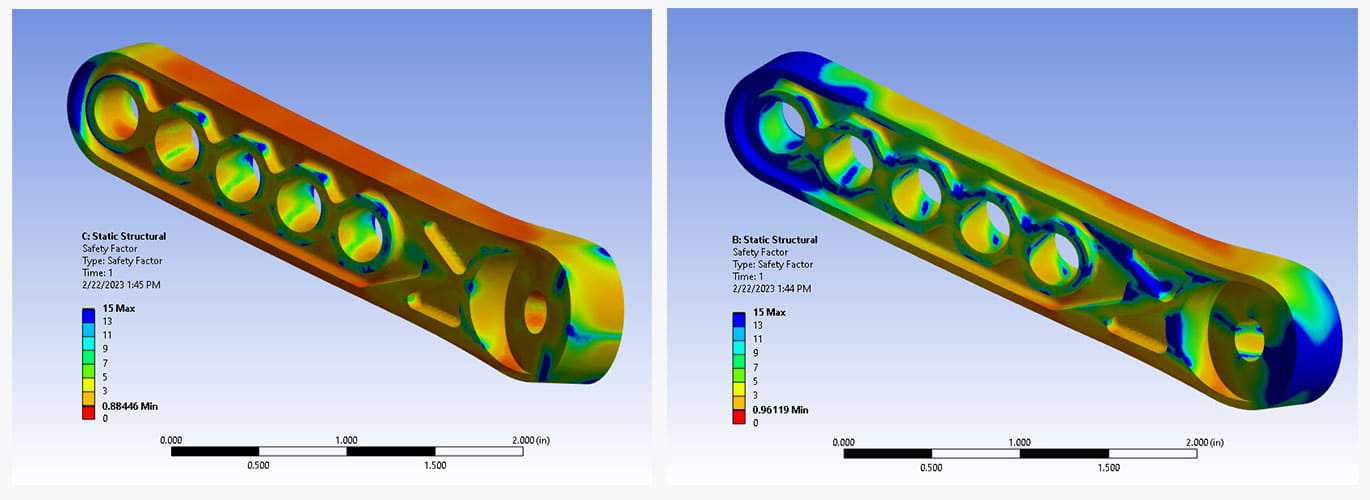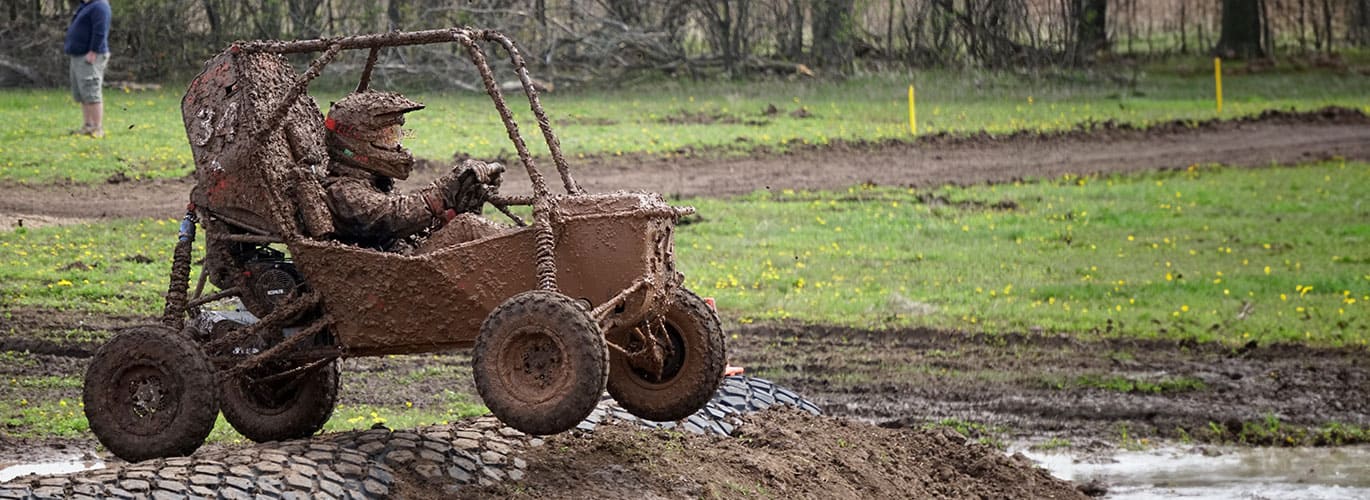University Racing Team Having 'Baja Blast' with Help from Digital Manufacturing
The North Carolina State University (NCSU) Baja team is comprised of 35 students that design, build, and race an off-road vehicle each year. The team’s annual season culminates in the collegiate off-road Baja vehicle competition hosted by the Society of Automotive Engineers (SAE). We chatted with Logan Hutchens, former team co-captain and current Protolabs maintenance technician to get the scoop on the team and how our metal 3D printing services came in clutch for the 2023 season.
While the NCSU Baja team has their own on-campus shop to use as a design playground, they turn to other manufacturing methods to fill in gaps for various racecar components. Thanks to Protolabs’ Cool Idea Award manufacturing grant, the team used our metal 3D printing service to create their vehicle’s sway bar, which helps prevent the vehicle from rolling while traversing tight turns at high speeds. Hutchens explains that the team ran multiple studies using AI with topology to effectively iterate and lightweight the sway bar in tandem with Protolabs’ digital quoting platform to monitor cost considerations.
“The Protolabs software was great. It’s nice to get a quote with a cost estimate, which helped us out a lot in sticking to our budget,” he said.

The 2022-2023 NCSU Baja crew.
Using AI to Anticipate Roadblocks
AI is everywhere and being used for nearly everything, it seems. Hutchens discusses the role AI played in their finite element analysis (FEA) using Topology software.
“The technology shows how much the part will deform in certain areas given the anticipated force it may endure; basically, it anticipates if it’ll bend at all. Then we also consider the factor of safety, which compares how much force is being applied that could break the material,” he explained. “Due to the different strength and toughness of the material options, our software analyzes the parts and runs generative design studies to input the forces we would expect.”
The group explored diverse metal options for the part and opted to lightweight it, a common design choice in metal 3D printing. Due to budget constraints, titanium didn’t fit the bill and aluminum didn’t yield the ideal safety rating during the material testing phase. Ultimately, stainless steel was the winning material for the vehicle’s sway bar. From there the team turned to our direct metal laser sintering (DMLS) service, which turned the team’s lightweighting goals into reality when the part arrived a few days after the order was placed.

Finite element analysis on the team’s vehicle sway bar.
Dividing and Conquering the Design
To compartmentalize the various needs to design and construct the vehicle, the team is broken into subsystems: frame, drive train, suspension, brakes, ergonomics, and electronics, allowing for plenty of time to create an optimized and functional racecar in a year. “We start the design cycle first in the summer, iterating on previous years’ designs and finding ways we can improve it,” he said.
Anyone from any major is welcome to join the team. “We teach people of every level how to engineer and build a car from the ground up,” said Hutchens. His favorite part about being part of the team is the valuable engineering experience everyone gains. “…Not only for designing in general but for designing specifically for manufacturing. School teaches the theory and Baja teaches the hands-on practice,” he said.

Some good clean fun during last year's Baja competition.
Edging Out International Competition
The Baja competition is fierce, with teams competing across the country and internationally. This past year included teams from Mexico, Canada, and Saudi Arabia. With over 80 teams in one competition and 50-60 in the endurance race, the three-day competition is split up with the first day running through technical inspection and design presentations for the judging panel, the second day dedicated to dynamic races with four different courses, and the last day for the main event: the endurance race.
“The endurance race is four hours long on a 1-to-2-mile course. All the cars are on the track at the same time, so durability is key,” Hutchens explained. The team fared well last year, placing 8th overall in the dynamic competition and 5th in endurance.
Hutchens explains that every team uses the same engine, with the same power. The optimization and opportunity for each team to shine comes with adjustments to the vehicle’s weight, drive train, suspension, and steering enhancements. With help from DMLS and the lightweighting of the sway bar, the NCSU vehicle weighed in at a trim 400 pounds.
Congrats to the team on a solid season. Get a behind-the-scenes look here on the team’s Instagram account. Want to learn more about the Protolabs Cool Idea Award, and see if it’s a fit for your school’s unique project? Check it out!





